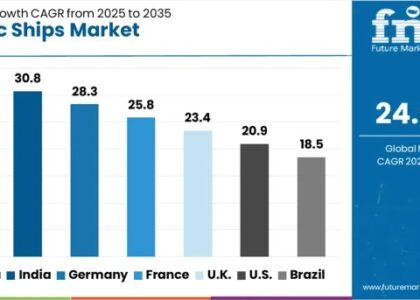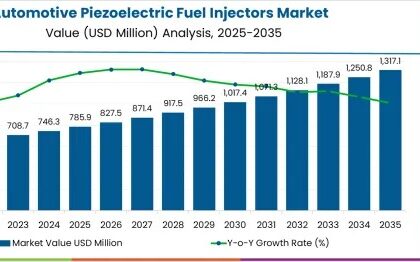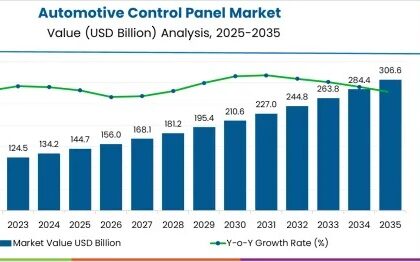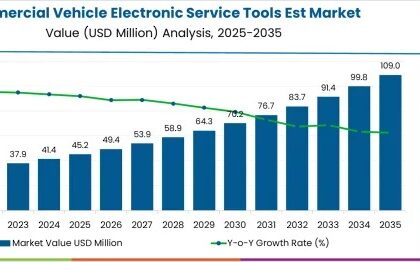
The out-of-home coffee market has experienced significant growth in recent years, with an increasing number of coffee enthusiasts preferring the convenience of purchasing their favorite brews on-the-go. This trend is largely driven by busy lifestyles and a growing demand for specialty coffee blends. Coffee shops, kiosks, and mobile vendors have capitalized on this opportunity by offering a wide range of coffee-based beverages, including lattes, cappuccinos, and cold brews, to cater to diverse tastes.
The global out-of-home coffee market is set to witness growth at a CAGR of 4.5% over the forecast period (2022–2032) and top a valuation of USD 36 Bn by 2032.
Stay ahead of the curve with our in-depth Sample report on the Out-of-home Coffee Market. Access key market insights and stay informed about emerging trends!
Changing lifestyle have altered the consumer behavior in past few years. Consumers who preferred tea over coffee have changed their preferences and have begun to consume coffee more than tea. Especially, working population having access to the coffee machines installed at their work places have shown an increased consumption of instant coffee since past half-decade.
Key Takeaways from the Market Study
- Europe is expected to dominate the global market by accounting for the maximum market value share of about 25% by 2022 end, followed by North America
- U.S. is to account for the maximum market share of nearly 78% of the North American out-of-home coffee market
- Rising coffee culture over tea consumption among youths in different regions across the globe is predicted to result in surging demand during the assessment period (2022–2032)
- By product type, instant coffee is expected to account for the maximum market value share of the global market by 2022 end
- Higher income groups and working population has an increased spending capacity which is likely to increase the demand for premium coffee brands of out-of-home coffee in the near future
- Indirect channel is expected to account for a higher market value share than direct channel by 2032 end
Coffee with low caffeine content helps in building the metabolism and improve the functioning of the brain. Owing to these factors, consumers are preferring coffee over tea. Furthermore, increased spending capacity of working population have convinced them to switch to premium coffee brands which is expected to fuel the out-of-home coffee market growth over the forecast period (2022–2032).
Alongside, there have been a huge impact of covid-19 pandemic on the market attributing to the disruption on the supply chain due to worldwide lockdown. The exports and imports of coffee beans were hampered which led to the downfall in the revenue for various manufacturers. Almost all of the offices, restaurants and coffee shops were forced shut during lockdown which hindered the growth of the out-of-home coffee market.
But now, as the restriction are lifted up, the market participants have started gaining a pace to gain a higher position in the market by addressing the needs of their customers and enhancing brand loyalty. This is likely to positively influence the growth of the market in the next few years.
“Increasing consumption of instant coffee has resulted in the installation of coffee machines at commercial places such as offices or communities where consumers have all-time access to drink coffee with varied flavors which is prophesied to increase the demand for out-of-home coffee in the coming decade”, says a Future Market Insights analyst.
Competitive Landscape
Key market participants are following different marketing and promotional strategies such as new product launches, geographical expansion, merger and acquisitions, partnerships and collaboration to address the needs of the consumers and serve accordingly, thus, creating a larger customer base in the coming years. For instance,
- In 2020, a company named Tchibo introduced ground and whole bean coffee products with a light, medium, and dark roasted beans, particularly in the United States. These products were widely available at retailers like Jewel and Hy-Vee in the regional market.
- Many manufacturers have started introducing new and innovative products by adding different flavors such as Italian roast, green bean, and mocha to attract a larger audience.
Explore More Valuable Insights
Future Market Insights, in its new report, offers an impartial analysis of the global out-of-home coffee market, presenting historical data (2017–2021) and estimation statistics for the forecast period of 2022–2032.
The study offers compelling insights based on product type (instant coffee, portioned coffee and roasted coffee), end use (HoReCa and commercial/office), and distribution channel (direct and indirect) across seven (North America, Latin America, Europe, East Asia, South Asia, Oceania and Middle East & Africa) major regions of the world.
About Future Market Insights (FMI)
Future Market Insights, Inc. (ESOMAR certified, recipient of the Stevie Award, and a member of the Greater New York Chamber of Commerce) offers profound insights into the driving factors that are boosting demand in the market. FMI stands as the leading global provider of market intelligence, advisory services, consulting, and events for the Packaging, Food and Beverage, Consumer Technology, Healthcare, Industrial, and Chemicals markets. With a vast team of over 5000 analysts worldwide, FMI provides global, regional, and local expertise on diverse domains and industry trends across more than 110 countries.
Contact Us:
Future Market Insights Inc.
Christiana Corporate, 200 Continental Drive,
Suite 401, Newark, Delaware – 19713, USA
T: +1-845-579-5705
For Sales Enquiries: sales@futuremarketinsights.com
Website: https://www.futuremarketinsights.com
LinkedIn| Twitter| Blogs | YouTube





